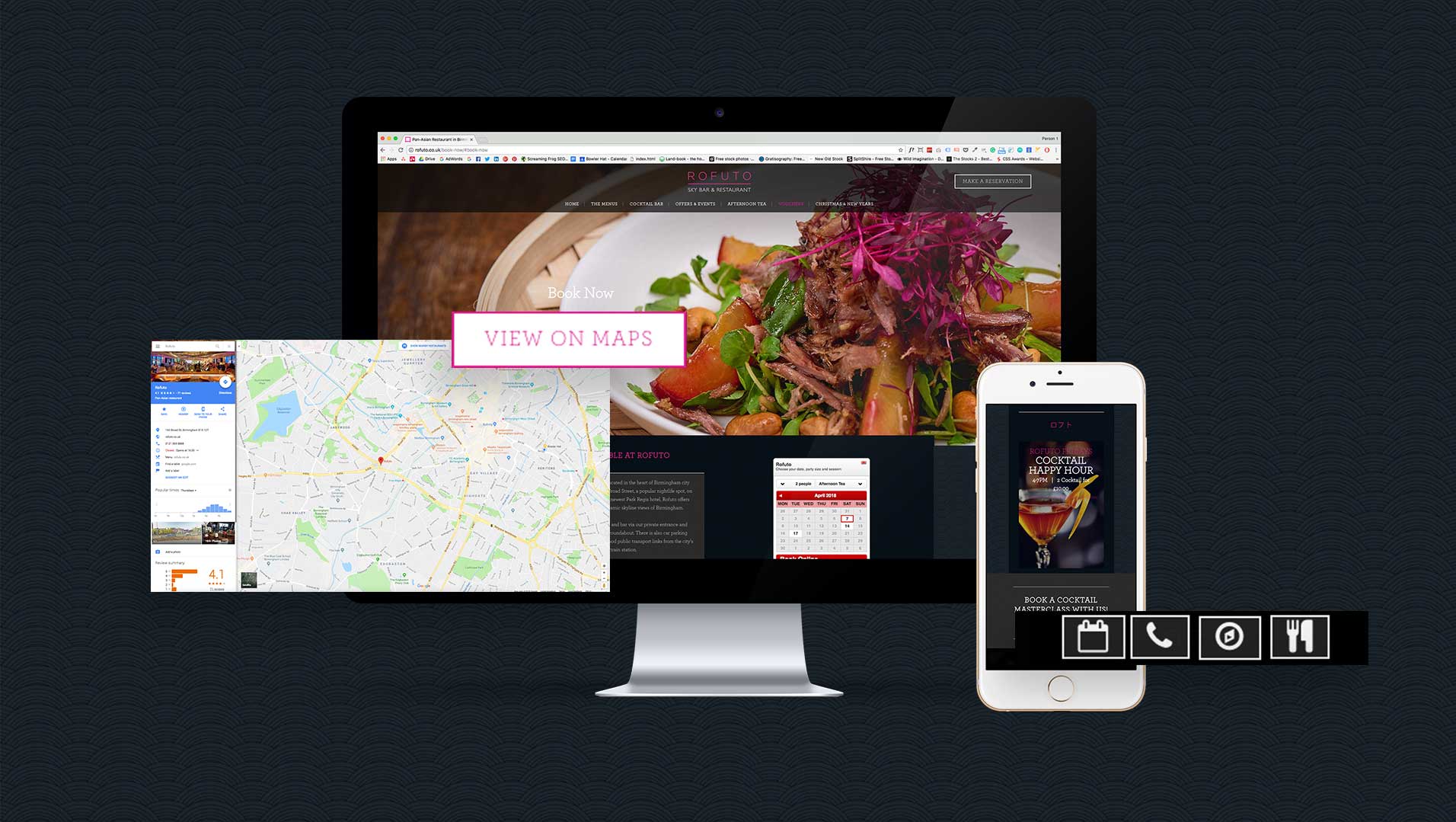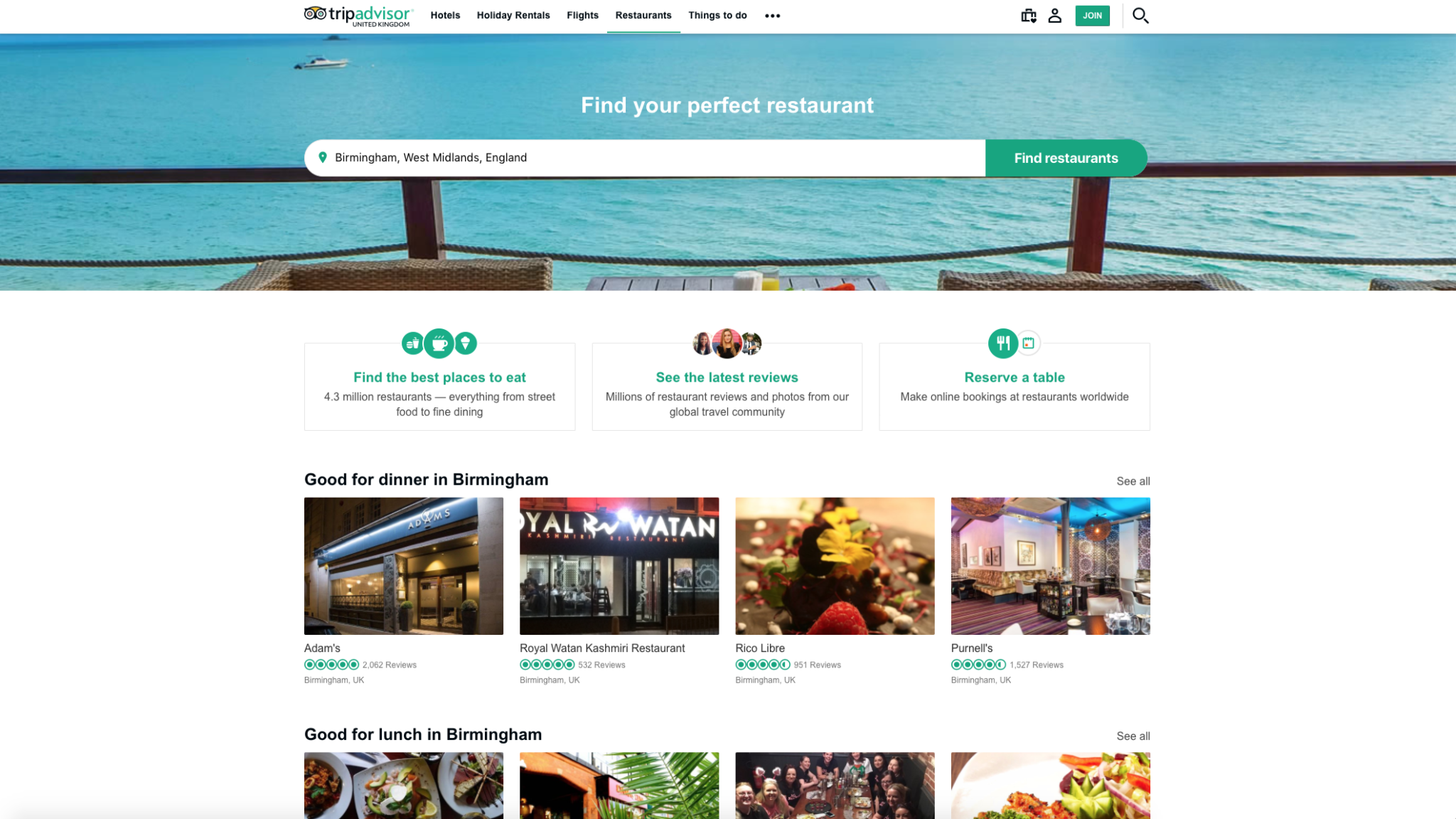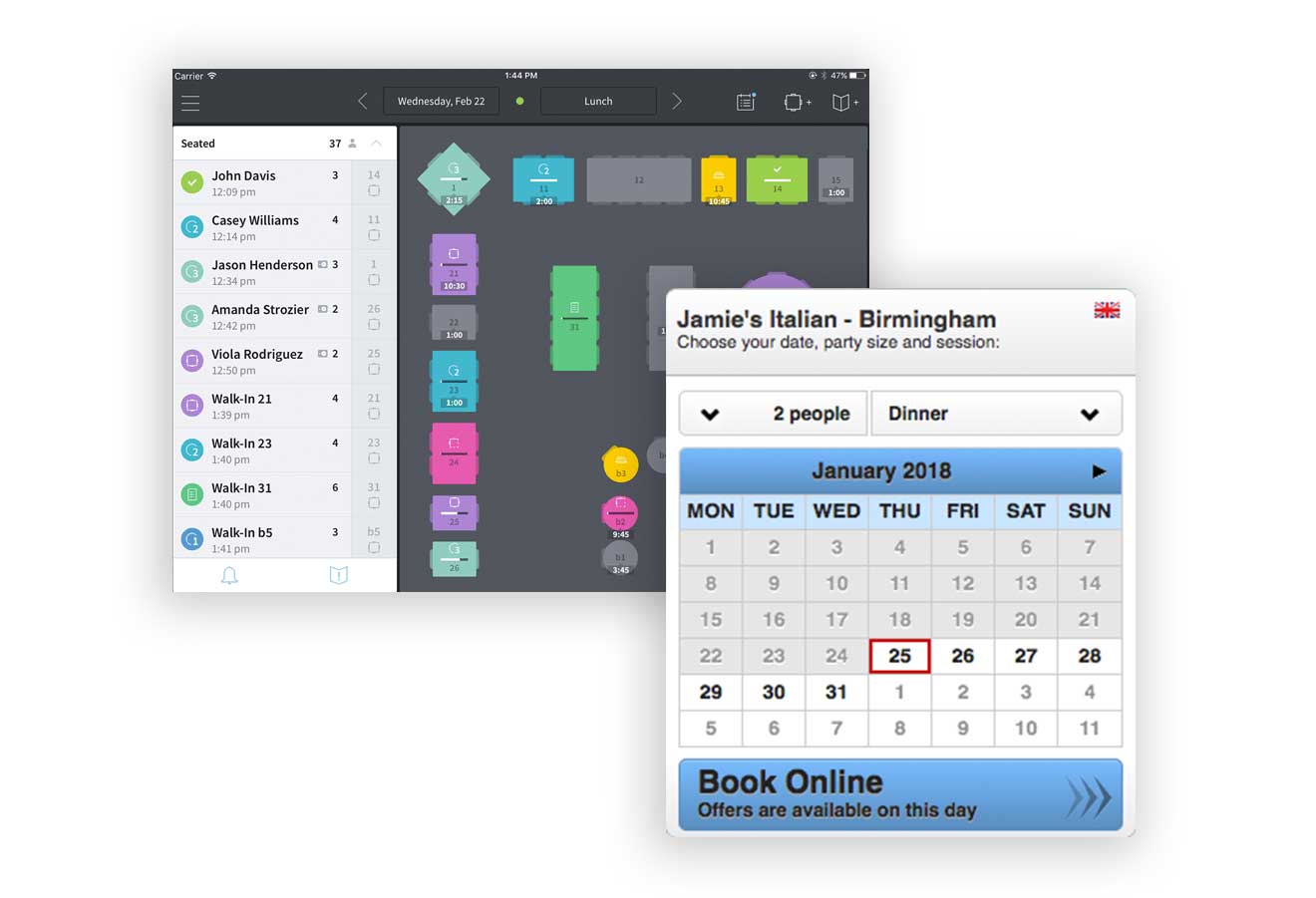You have your restaurant set up, the menus nailed, and you are slowly running out of budget. So how do you connect with the thousands of hungry customers out there?
Your website is the gateway to your business. Before even walking through your door, your potential customer base will probably have had some form of contact with you online first and so it’s crucial that your website is the best.
For restaurants, this initial contact is vital. In fact, according to the booking giants, OpenTable, the 2017 figure for the number of people who take to the web to check out a restaurant’s menu before visiting was 86%.
Throughout this post, I will outline some of the easiest ways you can help your restaurant shine online and create a website which will showcase your food to your users and, overall, convince your users to turn their browsing into bookings.
Understand Your Target Audience
Understanding your target audience can be tricky for a restaurant unless your restaurant specialises in a niche market such as vegan food or seafood.
The majority of restaurants will be targeting anyone with a healthy appetite and a love for food. However, there are a few points which you can take advantage of to really nail that initial contact.
With mobile internet users dominating the marketplace at the moment, you can bet your bottom dollar that the majority of your potential customers will be browsing your website on the go.
They could be on the bus, walking home, or checking out your restaurant on their lunch break to make a reservation for later that evening. This means they are likely to be in a hurry and you won’t have their full attention.
It’s now the 21st century and having a responsive site feels like a given, but there are still a lot of sites out there that don’t respond to mobile devices.
This makes it extremely hard for people to read your menus, navigate around your site, or even find anything out about your business, and this may reflect negatively on your brand.
Having an unresponsive site also means your business is missing out on the custom of thousands of mobile users.
Make the most of your site’s UX by keeping the navigation as simple as possible. Ensure the key elements the user will be looking to do, such as view the menu, book a table, get directions, and contact the restaurant, are all easily achievable with the click of a button.
You can do this through using a specialist bar on mobile or by keeping your menu as streamlined as possible.

Top tip: Give your UI a thought. 59% of people said they use directions to get to the restaurant, so take advantage of this and include a “get directions” button which leads them straight to Google Maps when clicked.
Create Convincing Content
The quality of your content is key in projecting a vision of your brand to your target audience the second they land on your site. You need to carry through the same standard that you provide in your service into the content on your site.
Your content should capture, engage, and convince your users to book a table or come and visit your restaurant and not leave them hungry for somewhere else to eat. So how can you make your content convincing?
Splash out and get a professional food photographer. It’s amazing what the right lighting and high-quality lens can do.
No matter how amazing the website design is, if you fill it with low-quality images it isn’t going to get anyone’s mouth watering and your customer will be jumping back into Google to check out your competitors.
Low-quality images suggest a low quality of food. If you are lacking in budget then stock images can be a good alternative but more often than not you can tell that they aren’t actually of your food because the background and lighting are different in each one.
On top of that, don’t just include pictures of the food, make sure you throw in a picture of the restaurant itself and maybe of your staff hard at work to give your users an idea of the atmosphere they can expect.
Try and keep the shots as natural as possible and avoid shots of an empty restaurant – people want to eat in a relaxed environment and empty tables may have them questioning why that’s the case.


Do you offer a happy hour? Everybody loves a drink now and then, so you should shout about it as part of your onsite content as it may be the deciding factor for your user.
Keep your offers bold amongst your content – if you have it painted on a sign outside your restaurant to draw people in off the streets then use your calls to action on the site to draw them to book online.
Don’t go and overcrowd the site with daily specials, but if you have a regular offer then it’s definitely something you should be talking about. Find out more about tailoring your CTAs here.
Give Your Customers A Voice
The power of the influencer is rife nowadays and people value the opinions of others more than ever.
Its impact is huge on a multitude of industries – whether you are buying a pair of jeans, going on holiday, or going out to eat, you can bet that before anyone carries out that final transaction they will have read at least one review online.
Within the restaurant industry especially, reviews play a huge part in the success of the business. In fact, 60% of people said that before they visit a restaurant they read reviews from other diners.
Take advantage of this by being transparent and placing your reviews right in front of your user for them to see.
Utilise mainstream review sites such as TripAdvisor and Google+ by placing your rating in the header or footer of your site where the user is constantly reminded of your feedback from other guests.

Integrate your social feeds with your site, whether it’s a Twitter plugin showing people’s tweets about your restaurant or an Instagram plugin showing amazing images of your food.
Staying on top of your social media can be a powerful driver of traffic to your site as well and provides you with the perfect opportunity to spread the word about your restaurant.
Word-of-mouth advertising is a powerful tool in the world of hospitality, and on social media, it only takes one like or share to reach a large pool of potential customers. Find out more ways to get your name out there here.
Top tip: Remember, people are impatient and asking for a review from your customers is often something they are unlikely to do if the process is complicated.
Make it as simple as you can by getting a link generated by Google that will allow you to send your customers straight to where they need to go. Find out how here.
Pick The Right Platforms
So you have killer content lined up, amazing reviews, and a seamless design, but what platform should you use to build your site?
There is an army of tools out there such as Squarespace, Wix, Yell, and WordPress which all offer an attractive proposition.
Of course, all platforms have their own benefits and drawbacks. What you need is a platform which will allow you to achieve a beautiful front-end but still provide you with an easy to manage and maintain back-end.
Here at Bowler Hat, we recommend using WordPress. With its easy to manage content management system and multitude of plugins, it seems like a no-brainer.
On top of that, WordPress has hundreds of specialist themes which are constantly updated and upgraded, which means it’s cheaper and easier than ever to create your site.
You can find out more about the pros and cons of WordPress here.
Platforms such as Squarespace, Wix, and Yell, which are composed of mainly drag and drop builders, all offer an attractive proposition, but they tend to lack the polished finish, back-end wizardry, and in Yell’s case, you don’t even own your site at the end.
Their scarce templated layouts also mean that you often end up with a similar site to other restaurants using their services.
If you want to check out some examples of each platform click the links below:
Booking Systems
How easy it is for people to book a table is vital. Your customers are on the move and won’t have the patience to fill out long forms.
Keep the booking process streamlined with short contact forms containing only important information and make sure you use the best booking system you can for your business.
There are thousands of different booking software out there but here at Bowler Hat our clients and ourselves tend to favour OpenTable and Bookatable.
Both systems are specialised to the restaurant business, are compatible with a multitude of website platforms, and provide a completely responsive front-end and really easy to manage back-end. This allows your customers to book easily and you to manage your bookings at the click of a button.

Pay Attention To Your Site Speed
After doing a bit of research into your target audience, we have already established that the large amount or your users will be on mobile, in a rush, and with a poor data connection.
The majority of users will give up on your site if it doesn’t load in under 3 seconds and a large majority won’t bother trying to return.
In order to avoid damaging your relationship with your customers during that initial contact, you need to make sure your site speed is up to scratch.
There are loads of programs out there that will help with your site speed optimisation, such as the Autoptimize plugin and Google’s PageSpeed, however, there are a few things that you can consider whilst building the site which will have a significant difference.
Before uploading your images to your new site, make sure you optimise your images. Especially if you have had photographs done by a professional photographer and you have large-scale, high-resolution images.
Check what dimensions the images need to be, scale them down to fit, then export the images from Photoshop using the save for web options.
When saving for web, think about image quality. You want your site to be fast but you don’t want your image quality to suffer because of it. If you are starting with an image that is already of a pretty low quality, export it as a higher quality file.
There are also a few behind-the-scenes technical tricks you can carry out to improve your site speed. Little things like the quality of your hosting can affect your page load time.
Cheap hosting from sources like GoDaddy and 1&1 are fine if your website doesn’t encourage much user engagement, but if you have a lot of site visitors then don’t opt for cheap hosting as large numbers of users will slow the site down and the last thing you want is your site crashing.
Some hosts and various WordPress plugins also allow you to cache your site. This basically means that a copy of your site is saved by the browser so that if someone visits your site again the site will load the saved version, making the site appear to load quicker.
Site speed is now also a ranking factor. You can test your site speed using Google’s site speed tool here.
Consider Your SEO As A Forethought Rather Than Aftercare
Struggling to decide where to eat this evening? Google it. With the world at our fingertips, most people will take to Google before deciding where to eat, and, as a result, the rewards a business can sow from getting into the top 3 positions can be phenomenal.
With the restaurant market growing increasingly saturated, the competition to get to the top of Google has never been so fierce. Ensuring your website is equipped with everything it needs from the get-go will give you a massive advantage in the long run.
If you have had a website before on a different domain, make sure you redirect all of the old URLs so you can maintain any traffic through links to your old domain.
Make the most of SEO plugins such as Yoast that allow you to easily optimise your page titles and meta descriptions and make sure your URLs are structured properly in an order that makes sense.
There is a magnitude of different ways in which you can get your on-site SEO up to scratch. You can get a deeper understanding of how you can optimise your new site here.
Get In Front Of People
So your site is built and it’s about to go live, but how do you get it out there in front of people? There are many ways in which you can get your website found both online and offline.
We are lucky enough to live in the age of the smartphone upon which there is a saturation of apps focused on the food industry. Take advantage of the ever-growing restaurant delivery market by signing up with app giants like Deliveroo and UberEats and gain even more exposure amongst their local users.
Linking with businesses nearby will not only gain you exposure through their referrals but the links from their site will also help you out with your rankings in Google, especially if they are a well-established business with a strong online presence. (You can find more tips on how to improve your Google rankings here.)
As well as helping with rankings, featuring partner logos will also increase user trust and make your restaurant look even better to your clientele.
Top tip: Take advantage of Google. Make sure you index your site once it’s launched so it is picked up in the search engine and then go ahead and create yourself a Google My Business listing.
People often search for restaurants using nearby locations on Google Maps and ensuring you have your restaurant’s details all set up in Google will not only allow you to show up in Google Maps if it’s a nearby location but will also provide customers with useful information and images about your business.
Track Your Site’s Progress
Websites are an aspect of your business that needs to change and adapt in line with your business goals.
Have you launched your new site but you don’t seem to be receiving any bookings? You need to be able to identify why this is happening in order to improve and evolve your site in an informed manner.
Installing tools like Inspectlet, Google Analytics, and Webmaster Tools allow you to track how your site is being used, where users are dropping off, how long people tend to stay on your pages, and which pages are bringing in the most traffic.
Summary
Overall, your website is the heart of your brand online. If it’s neglected, how are any other attempts to promote your business supposed to work?
If your website is thought out, planned properly, and content is carefully crafted from the start, then it can be a powerful tool in helping you achieve your overall business goals.
Putting afterthought into things like SEO, management, maintenance, and promotion can help avoid having to get your site rebuilt every year.
Just in case you skipped straight to the end, what you need to remember to help your restaurant website be the best is listed again below:
- Understand your target audience
- Create convincing content
- Give your customers a voice
- Pick the right platforms
- Pay attention to your site speed
- Consider your SEO
- Get in front of people
- Track your site’s progress
If you are a restaurant owner who is embarking on setting a website up for the first time or maybe you just want to make sure you have everything in place that you should have, check out our website planning guide here or save it for later by downloading it for free here.
Alternatively, if you already have your website up and running, take advantage of our free website audit and we can give you advice on how to make those ever so important improvements.
If this post has left you with a load of questions then get in touch today on 0121 314 2001 or send us an email at [email protected] to talk to a member of the team today and we will see what we can do to help!


